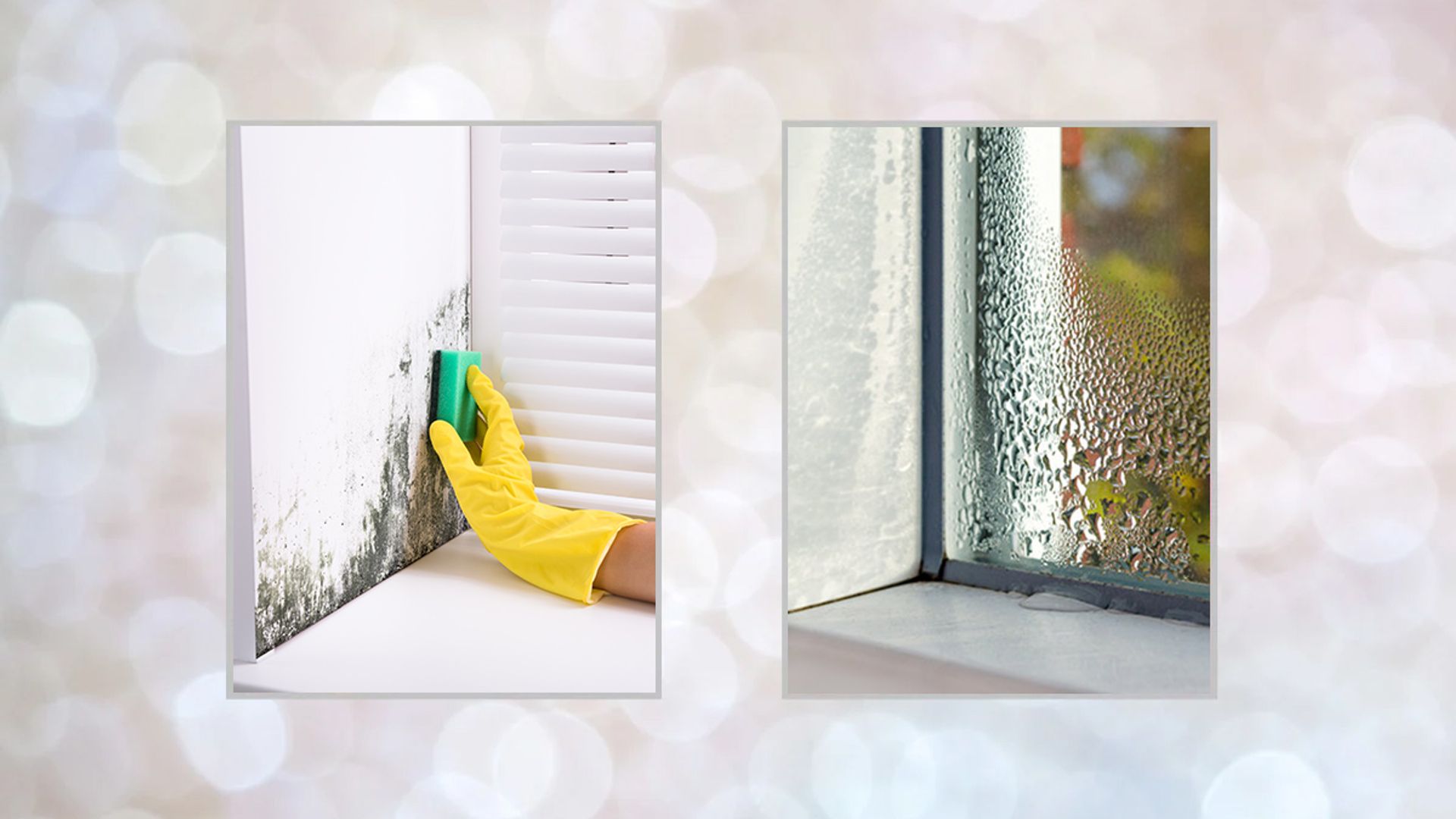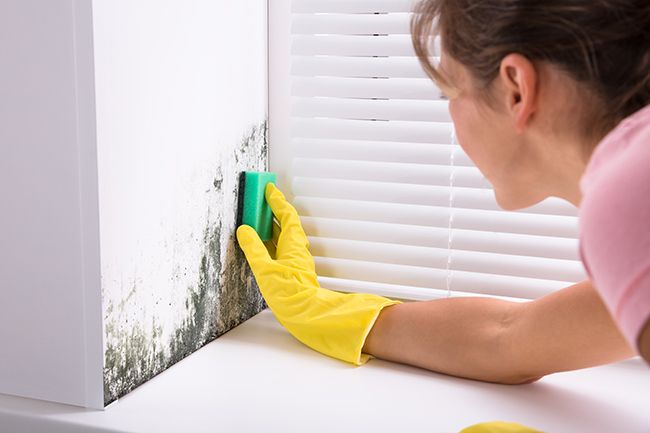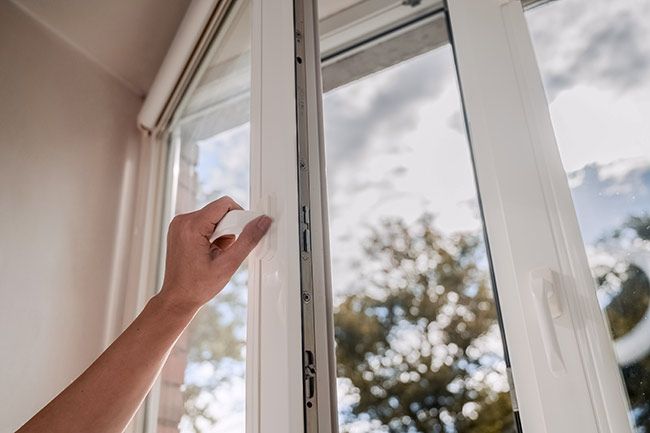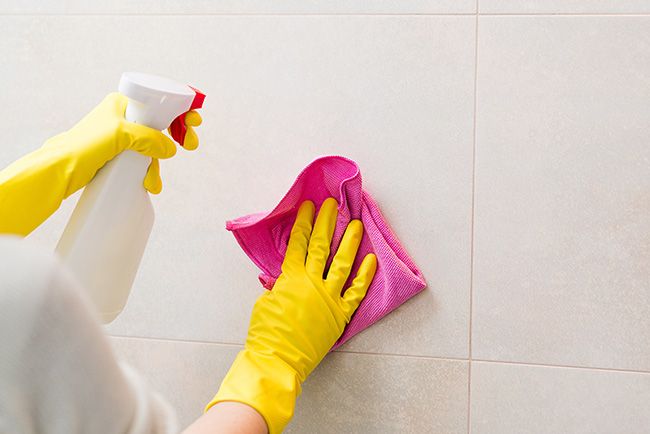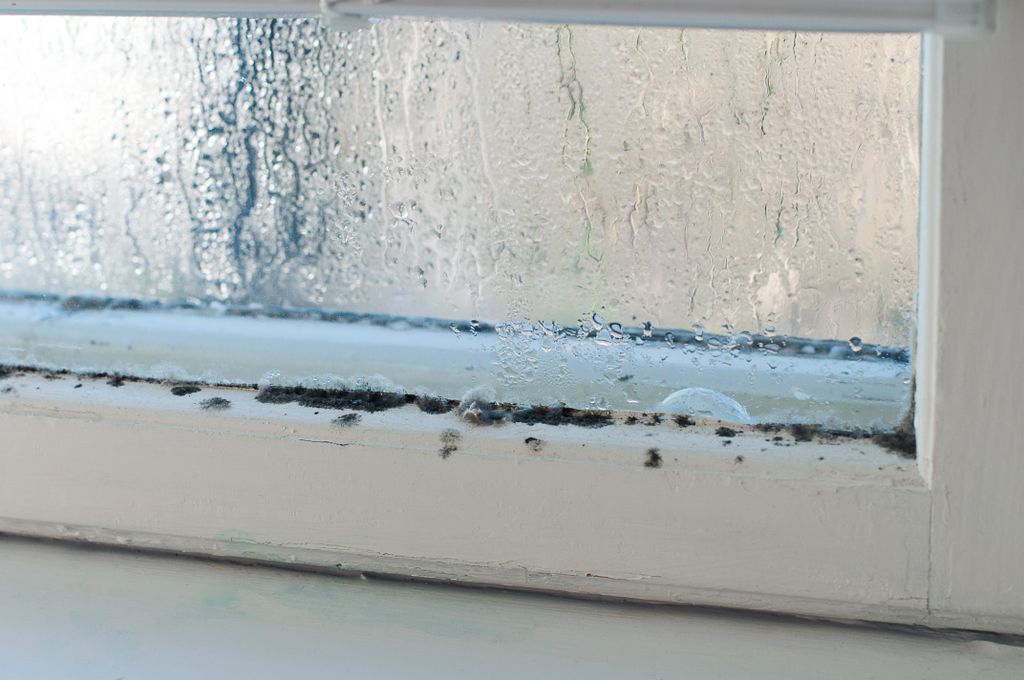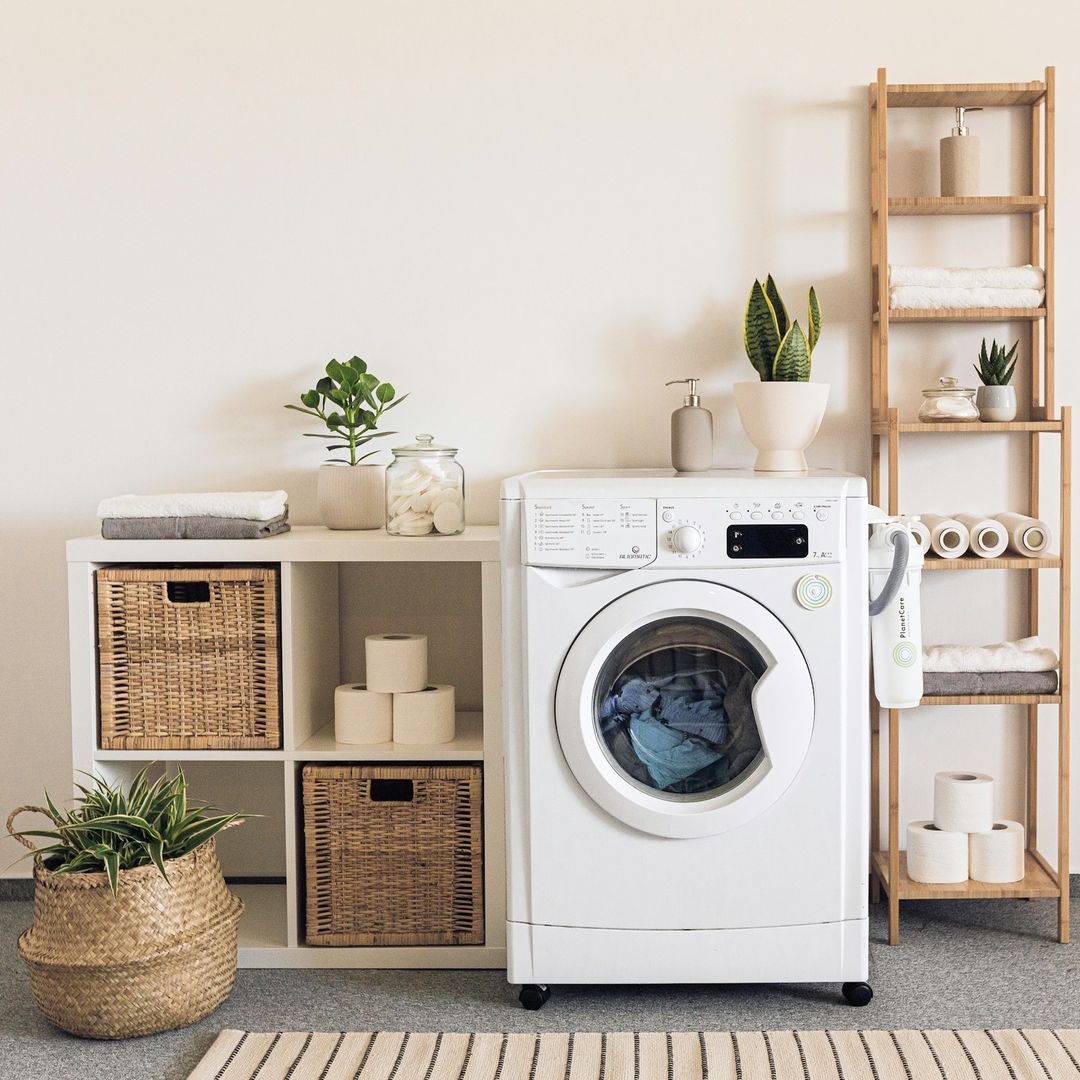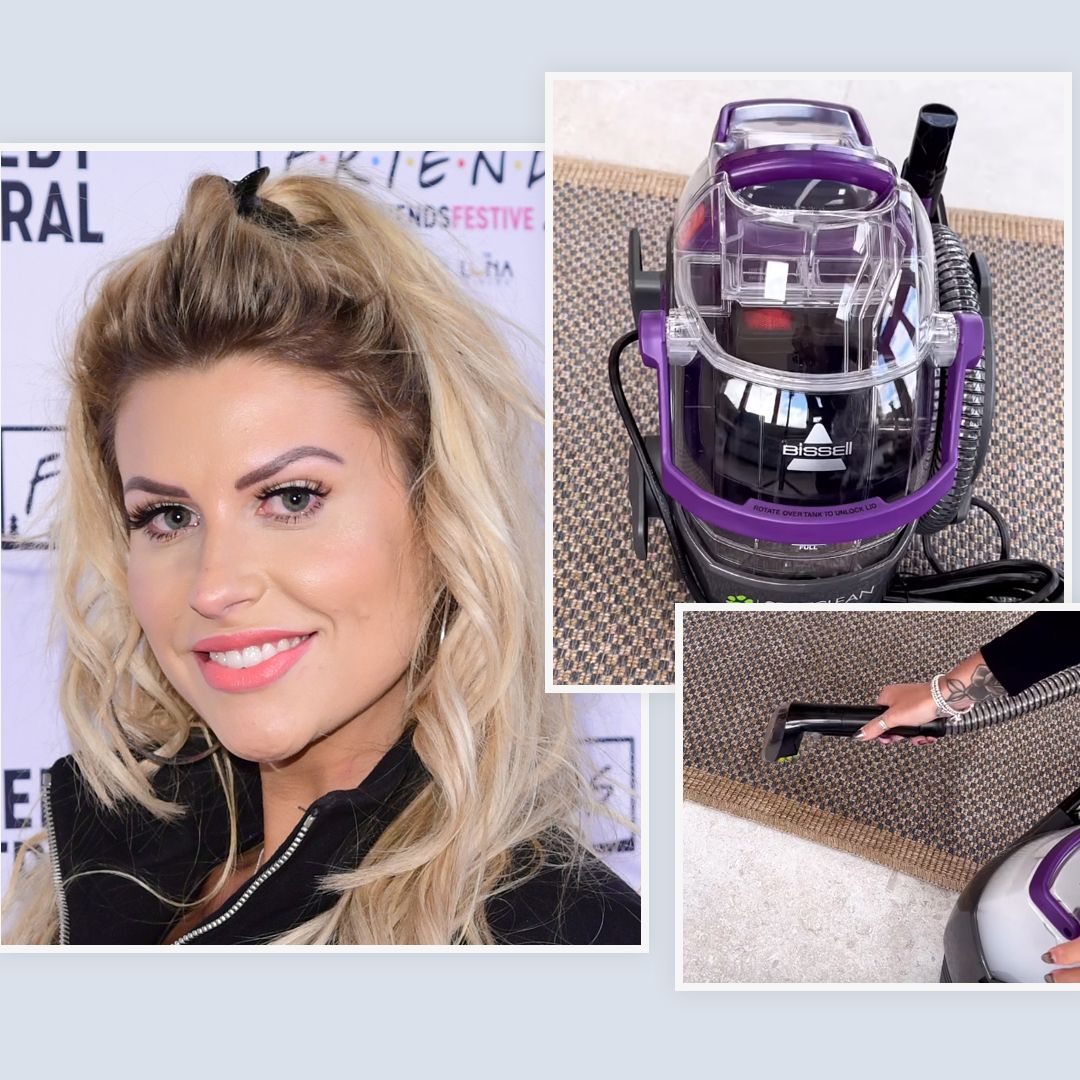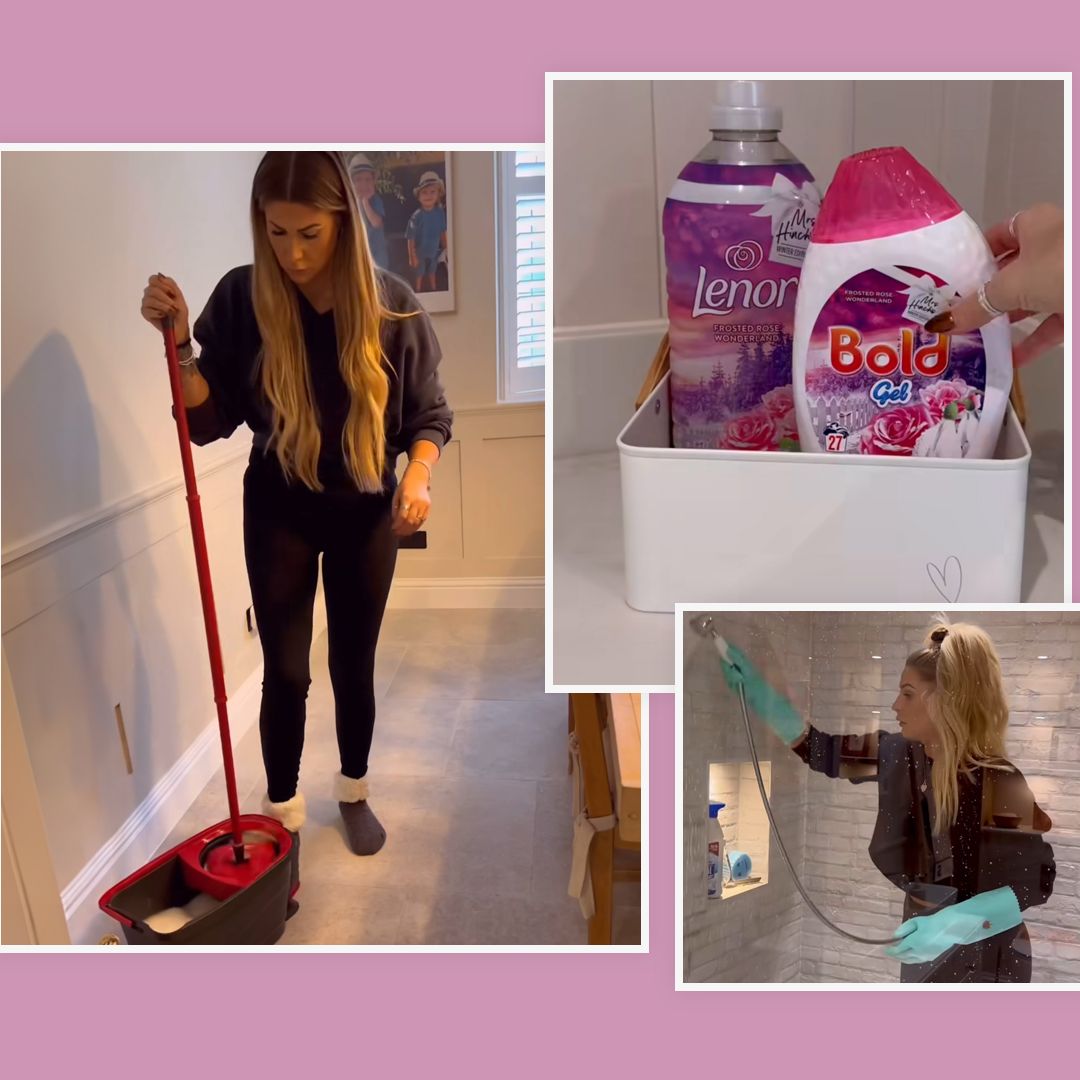Mould is a common problem in homes, and one that shouldn't be ignored. Not only does mould on walls look unsightly, but it can have serious health implications too, so it is important to learn how to remove it – and also how to prevent it from developing in the first place.
"Mould in the home can be a big cause for concern. Not only are there growing fears about mould toxicity and the overall impact on our health, but it can look unsightly and smell unpleasant," James Mellan-Matulewicz, Creative Director and Designer at luxury wallpaper brand, Bobbi Beck, says.
Mould is a problem that shouldn't be ignored in the home
"Thankfully, the early signs of mould are less likely to cause any kind of health risk and are much more treatable. It's important to treat mould as soon as possible to combat any negative effects, without causing damage to your carefully curated interiors. Not only will treating mould properly give you peace of mind, but it will also keep your decor looking fresh for many years."
Discover all you need to know about what causes mould and the steps you can take to remove it below…
READ: How to get rid of dust in your home - and keep it away
What causes mould on interior walls?
"Mould forms when there is a lack of proper ventilation. If water is able to get onto walls and then isn't adequately dried out, damp sets in and mould starts to form. This could be from a bathroom or shower, or from badly fitted or old windows letting moisture inside the house," James explains.
Warmer weather conditions can exacerbate mould in the summer, while condensation on windows can lead to damp patches that turn into mould if not treated in time.
Meanwhile, James advises: "Mould can form under wallpaper when the walls are damp and the wallpaper is applied before the walls have dried out. Over time this mould will start to form on top of the wallpaper if it is not dealt with."
How can I prevent mould?
Ventilating your home can help to prevent mould
The easiest way to prevent mould is to ventilate your home, even throughout the winter, by opening windows to let fresh air in. You should also check fans and ventilation systems are working efficiently, and make sure windows and doors are sealed effectively to prevent excess moisture coming in.
"Check pipework for leaks and have a look at the roof to see if water could be getting in there. Mould can also grow when a house is too cold for too long. Try to maintain a consistent temperature of above 15 degrees as much as possible," James advises.
SHOP: Stacey Solomon's favourite window vac is on sale at Amazon
RELATED: The must-have cleaning gadgets celebrities swear by
How can I remove mould from walls?
There are several ways to remove mould from your walls, depending on how severe the problem is.
"Firstly make sure your wallpaper is washable by trying some warm soapy water on a small patch. Better still, check in with your wallpaper manufacturer beforehand to ensure you won’t damage the wallpaper," James says. "Once you know it’s safe to proceed, vinegar is a good home remedy to start with. Rub vinegar onto the mould and then wash away with very hot water. Don’t scrub too vigorously as this could spoil the wallpaper."
MORE: 5 time-saving cleaning hacks that will change your life
If you have a more severe mould problem, you can try a heavy duty mould and mildew cleaner, which are particularly effective at removing mould from walls and around windows or baths. You should remove mould as soon as you spot the first signs of damage, to stop the problem from getting worse, and ensure to continue ventilating the rooms to stop it coming back.
There are many specialist cleaners to help remove mould
Will I need to redecorate if I have mould on my walls?
"If you have moved into a new home with mould, it could be wise to redecorate as you don’t know how long the mould has been there or how bad the problem is. Stripping walls and treating any mould will be a good investment in the long run," James says.
MORE: 9 genius home painting hacks to save you time and money
"If you have recently decorated your home and have spotted mould then you know it’s a new problem and can handle it as above. Mould can be a serious problem for people with allergies or illnesses like asthma. If mould has developed beyond just a few small spots, then it could need more invasive treatment. Stripping any wallpaper will allow you to treat the underlying problem and get rid of the damp problem causing the mould. Follow the above steps before redecorating and always put your health before home decor."
How to get rid of mould on shower tiles and grout
Bathrooms are a place where mould can easily build up, as moisture and water vapour regularly gather. It may present itself as small black mould spots or a muddy film on grouting, tiles and walls.
"One way to tackle mould is with chlorine bleach. There are plenty on the market and many of them are designed to specifically kill bathroom mould. You will have to be careful with this method particularly if you have coloured tile grout or caulking, as the bleach can make both fade considerably," says Rikki Fothergill, bathroom style expert at luxury bathroom specialists Big Bathroom Shop.
RELATED: 6 devastating but common house problems - and how to solve them fast
"For this method, simply spray the cleaner directly onto the mouldy grout then allow it to sit for 20 to 30 minutes before scrubbing with a stiff bristled brush and rinsing. For an alternative, non-toxic mould killer, white vinegar is your best bet. Grab yourself a spray bottle and pour in some white vinegar. It does not need to be diluted, in fact, it is at its most effective when it is just pure vinegar being sprayed. The same cleaning method as above applies but after scrubbing, we advise to spray on another layer for 30 minutes before rinsing."
How to remove mould from wood
Wood that has become damp should be cleaned at the first sign of mould. If possible, take the mould-infested wood outside to clean, but if this isn't possible, use plastic sheeting to cover other areas and prevent spores from spreading. Then follow the steps below.
- Vacuum up as much mould as possible using a vacuum with a HEPA filter, then empty and clean the canister.
- If the wood is sealed or painted, you can clean it with a solution of liquid dishwashing detergent and water, and use a soft-bristled brush to gently scrub away mould. Use a sponge to wipe away any excess water.
- Tackle light stains with distilled white vinegar. Apply a light mist on the surface and leave to air-dry for an hour to kill any remaining spores.
- Use bleach to clean tougher mould stains if vinegar isn't effective. Create a mix of one cup of warm water, half a cup of bleach and a tablespoon of dishwashing detergent then apply to the mould with a soft-bristled brush. Leave it to air dry then gently buff away the mould with a cloth.
How to get rid of mould on fabric
If you've discovered mould on clothes or other fabric items, the treatment will depend on how long the stains have been there and the type of fabric. Fresh mould stains may be removed simply by washing on a hot wash, otherwise you may want to try and follow the steps below.
- Check the garment care labels and ensure to follow directions of the ideal water temperature and care for your item.
- Apply a mould stain remover such as white distilled vinegar or soap to the item and gently scrub with a clean toothbrush.
- Alternatively, you could pre-soak the item in a bucket of water mixed with a cup of vinegar for one hour.
- Wash clothes at the hottest temperature possible.
- Hang your clothing out in the sun to dry and help to remove any remaining mould.
Like this story? Sign up to our HELLO! Mail newsletter to receive all the latest royal and celebrity news straight in your inbox.
